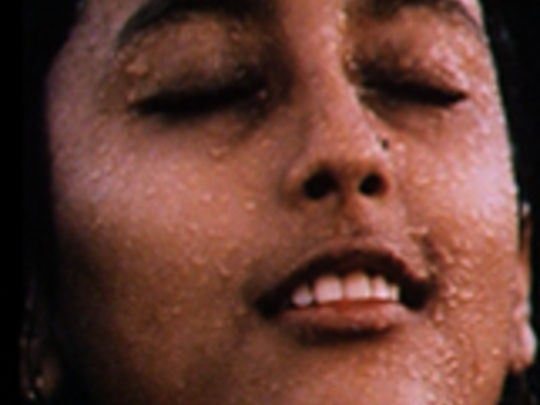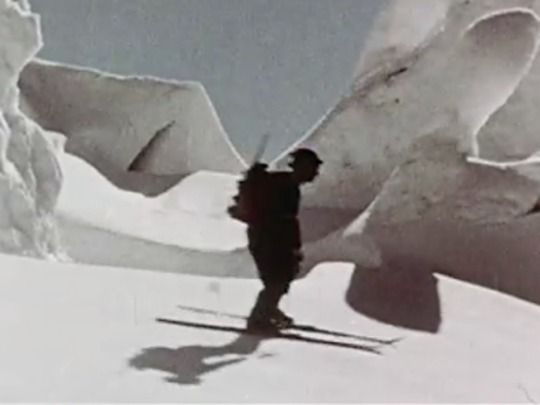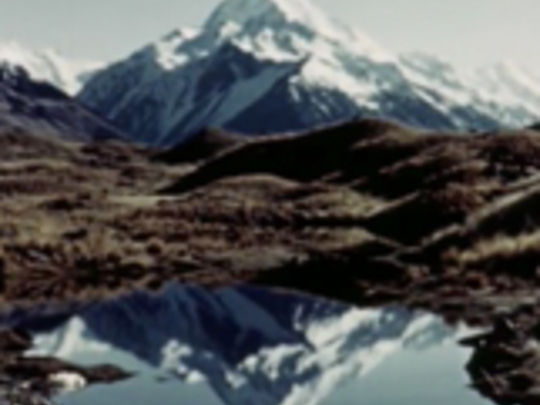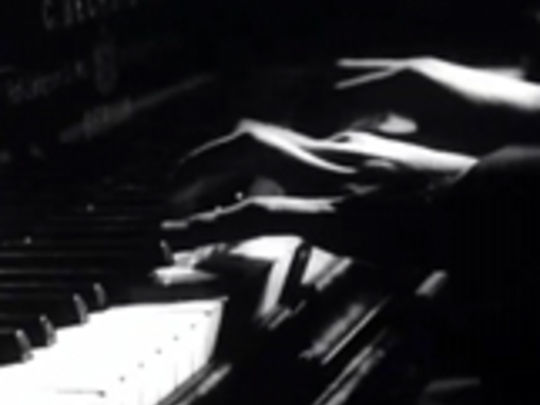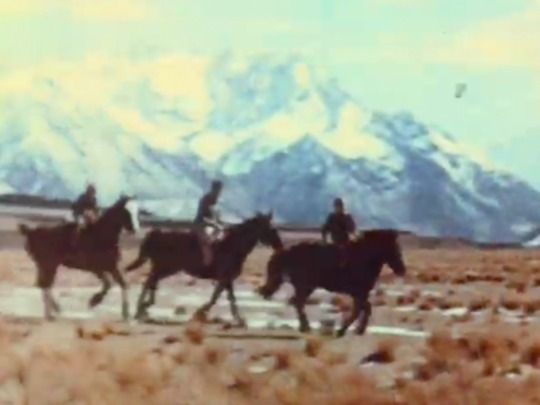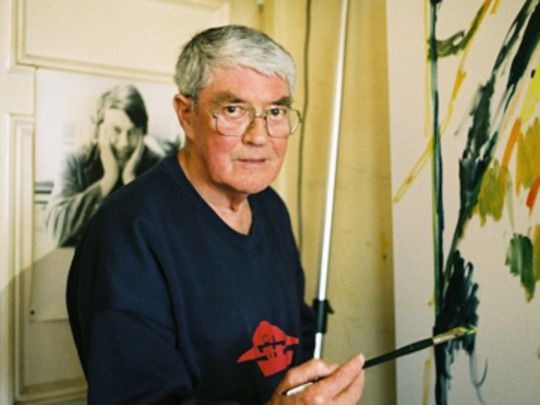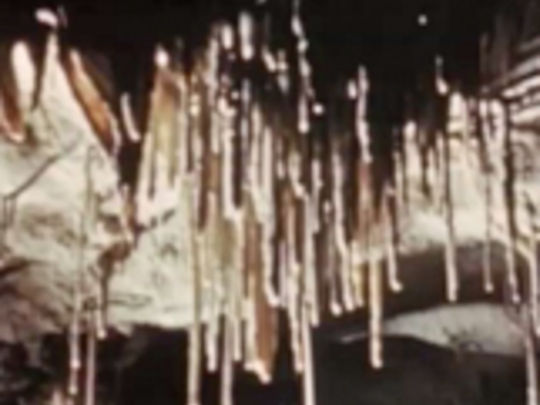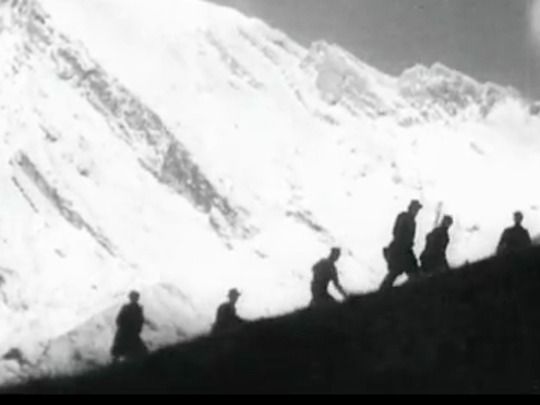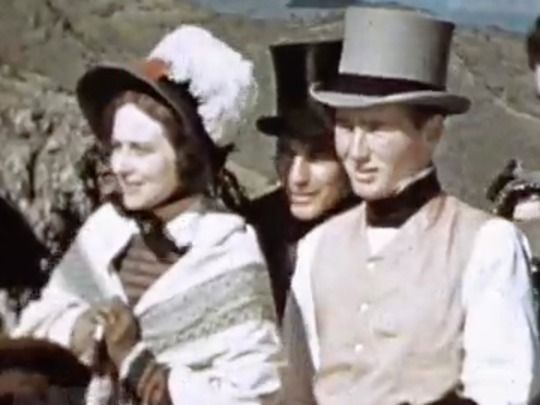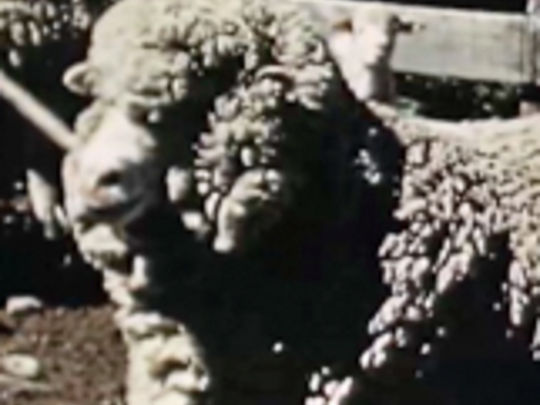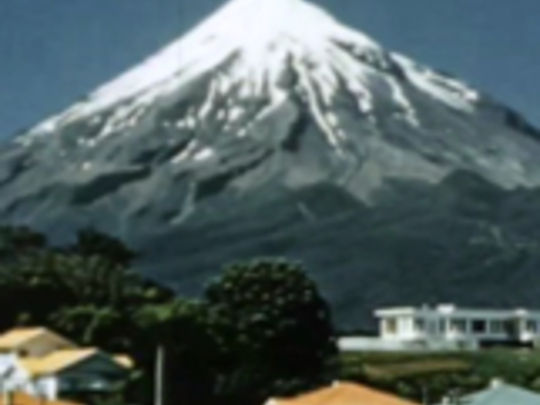Brian Brake at the NFU
An Independent and Spirited Style
When Brian Brake joined the National Film Unit in 1948, it was New Zealand's largest film studio and specialised in making documentary films. Its main focus was the Weekly Review, a series of short documentaries that preceded feature films in cinemas, and featured aspects of New Zealand life and work. During his time working for the NFU, Brake developed an independent and spirited style that formed the basis for his career as an international photojournalist.
Prelude to Aspiring (1949), which screened as part of the Weekly Review series, was the first film Brake made as both director and cameraman. It was shot on black and white 35mm film in Easter 1949, during celebrations to mark the opening of Aspiring Hut at the top of the Matukituki Valley. The film documents the trip up to the new hut, including the group and their supply vehicles making a precarious river crossing, and describes the opening of the hut in a voice-over commentary. The film's focus then turns to the task of repairing a shelter higher up on Mount French.
Brake returned to the area in December 1949 to make a colour film. Aspiring (1949) was tto be a collaborative film made by Brake, poet James K Baxter, composer Douglas Lilburn and artist John Drawbridge. It remains unfinished because bad weather stopped filming. The group spent several weeks in a mountain hut waiting for the weather to clear before the project was abandoned. However, the alpine film became Brake's genre and he went on to make two mountain films, Mount Cook (1951) and Snows of Aorangi (1955). In the latter he might have intended to address some of the aims he had for Aspiring.
With the National Film Unit's support, Brake gained a scholarship from the British Council and in 1951 travelled overseas to learn more about colour cinematography. He visited film laboratories and film studios in Britain, Europe and the United States that were making and using the different brands of negative colour film stocks available. He also visited the National Film Board of Canada, which had used the new Eastman colour 35mm negative (ahead of its release on the market) to make The Royal Journey (1951), a film of Princess Elizabeth's visit to Canada. Following the Film Board of Canada's lead, the National Film Unit also used the Eastman negative for Royal New Zealand Journey (1954), which Brake worked on as a cameraman.
On his return to New Zealand, Brake proved himself as a cameraman and director at the unit with his black and white film, New Zealand pianist Richard Farrell (1952), an innovative film that combined musical performance and moving portraiture. By shooting some film and then rewinding it and reshooting, Brake created multiple dissolves and exposures in the camera of Farrell playing a Chopin waltz. Brake did something unusual - he made a visually engaging film of a musician playing an instrument so that the film moved beyond simply documenting Farrell and became an art work in itself.
During 1952-53 Brake shot his most successful films, Snows of Aorangi and The Snowline is Their Boundary (1955). Contemporary reviewers praised both films for the technical skill evident in the camerawork, editing and direction. The New Zealand Listener (15 October 1954) reviewer praised Brake's involvement in Snows of Aorangi: "The photography is superb and the editing matches it in quality. This is a film with pace, high spirits and good humour as well as great pictorial beauty." Truth's (6 October 1952) reviewer wrote: "Snows of Aorangi is a skiing symphony as delightful to listen to as to watch."
In The Snowline is Their Boundary, the hand of experienced film director Oxley Hughan is apparent in the continuity of the story and the pacing of the visual images. The film is sympathetic to the family and workers whom it profiles, and this gives it some nice moments: the mother and toddler sitting on the fence and laughing, and the packhorse nudging open the hut door. However, the film's affinity with its subject is most apparent when the voice-over switches from the film unit's standard BBC-style commentary to that of the rural New Zealand voice of one of the station's musterers.
Snows of Aorangi shows Brake using the camera in subtle ways to capture movement. He favoured holding the camera still and allowing movement within the frame, in long takes followed by very slow pans. The latter part of the film, with three skiers ecountering large areas of untouched snow and large ice falls, is beautifully shot, and has an ease and lightness about it. If Brake's intention had been to make an abstract film, the effect was spoilt by the film unit's tendency to rely heavily on commentary rather than synchronised sound.
It can be hard to distinguish Brake's creative project in these films from that of the film unit's broader objective of promoting the landscape for tourism. At one point in Snows of Aorangi, the action shifts to a short promotional segment on the Queenstown lakes and other snowfields and chalets around the country. While increasing the geographical spread of the film in the interest of promoting tourism, it also makes the storyline confusing and disjointed. This aspect of Brake's film raised the issue of interference in the work of the NFU by the Tourist and Publicity Department.
During the war years, the National Film Unit had been part of the Prime Minister's Department, but in 1950, due to alleged political bias, the Weekly Review series ended and the unit shifted to the Tourist and Publicity Department. In the war years the focus had been social documentaries, while in peace time, attention turned to selling the tourism possibilities of the country. These agendas contrasted with the artistic aspirations of staff such as Brake, who quit the film unit and left New Zealand to seek work in London before Snows of Aorangi was released.
Lissa Mitchell is Curator of Historical Photography at the Museum of New Zealand Te Papa Tongarewa.

